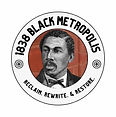This is not the 7th Ward
- Michiko

- May 31, 2023
- 2 min read
Updated: Nov 9
I keep seeing well meaning historians describe 1830s and 1840s Black Philadelphians as living in the 7th ward.
Ya'll. The 7th ward did not exist until 1854.
Ever since W.E.B DuBois wrote The Philadelphia Negro, the 7th Ward has become code language for Black. What that has encouraged is a thought process that all Black people in Philadelphia were all in the 7th ward, all the time.
It was a very long 19th century.
From about 1820 -1842, the wards had names, not numbers.
For example, here's an 1840 Map. Look at the big blocks of color. Those indicate independent municipalities; Penn, Spring Garden, Northern Liberties, Kensington, City, Moyamensing and Southwark.
Philadelphia consolidated all these municipalities into one big city in 1854. This event is called, simply, The Consolidation. There was no 7th ward prior to this.

The City section was divided into wards. I've indicated the Black population percentage from the 1850 census on some of little boxes on the map below.
Couple things to note: By 1850, a decade of white mob attacks (aka 'riots') had put pressure on Black people living in Pine, New Market and Lombard wards. People were scared. A Black man named Steven James was killed in front of his family. And some homes, churches and halls were burned down. This translated into a loss of wealth and stability that was reflected by a move of many Black people into Moyamensing, the area of the city with the cheapest rents.
People often say that the Black population was only 12% of Philadelphia's total population. Even so we see that the Black population in Pine and New Market wards were much higher than 12% in 1850 (see our calcs here) . Note that those wards are east of what became the 7th ward. Given the exodus of Black people out of these wards and into Spruce and Cedar wards (which eventually became the 7th Ward), we know that Pine, New Market, Lombard and Locust ward percentages in 1838 were actually higher than you see here, closer to 50%. However, the 1840 US Census does not provide data by wards, so we can't compare.

Du Bois was trying to tell us this with this great visualization from The Philadelphia Negro. The rate of increase of the Black Population was about 10% a year until the mob attacks, when it slowed to 4.5%. But it did not stop. And it picked up again. This is still remarkable considering the normal rate of population growth is about 1.1% a year. That 4-10% wasn't just a lot of new babies. It was freedom seekers.

So please historians, let's leave the 7th Ward to the late 1850s forward. Thanks!






